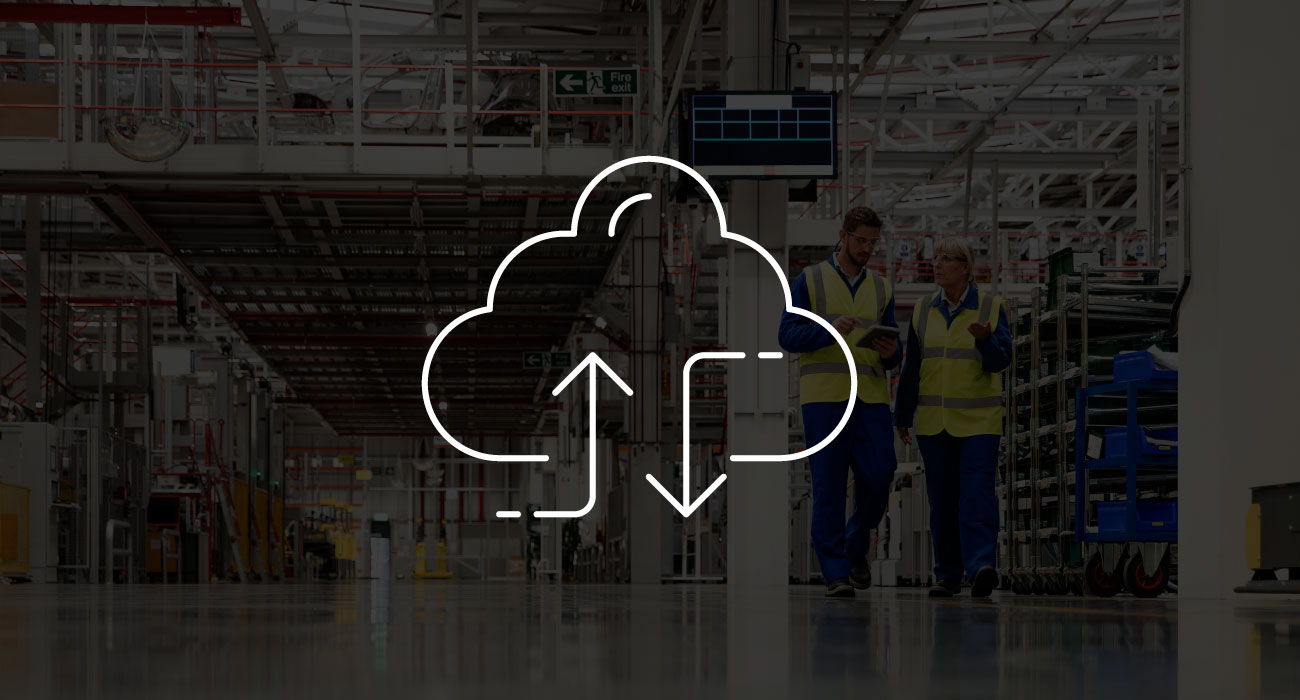Hybrid Cloud Manufacturing: The Key Driver Of Industry 4.0

In today’s fast-paced manufacturing environment, staying ahead of the competition means embracing Digital Transformation. Cloud-enabled manufacturing is revolutionizing the industry by providing scalable, secure, and highly efficient solutions that streamline operations and enhance productivity. Cloud goes hand in hand with edge or on-prem-based solutions to create a true enterprise-grade manufacturing system. Edge and cloud systems together are what we are calling hybrid cloud in this blog.

The Power Of Cloud-Enabled Manufacturing
Traditional manufacturing systems often rely on complex, siloed IT and OT infrastructures that are costly to maintain and challenging to scale. To truly embrace the convergence of IT and OT, the top to bottom of a manufacturing operation needs to be taken into consideration. This means from the (typically) cloud-based business software all the way down to the edge data points, the entire process should be explored to design a scalable and manageable system. Starting at the cloud, it is important to consider the following:
- Scale: Cloud gives us the power to scale operations up or down with ease. However, this does not mean it is a trivial design process. A carefully designed system will optimize cloud compute expenses but be prepared to easily scale without requiring a complete redesign. Setting up a good base design is critical to having a good, scalable, and manageable foundation. Expanding from a few sites to many sites should not require a complete redesign. To do this well requires a good long-term plan. It requires a plan that looks at the complete picture from cloud to edge. If set up well, a good base can be built to enable a scalable, reliable, and accessible centralized system. Adding more sites should feel more like an established procedure, not an R&D project. All additional sites can be centrally managed. Utilizing a central parent project or centralizing core components can enable standardization across all facilities. Expanding a multi-site OEE, MES, or SCADA system becomes routine.
- Security: The cloud is just as critical to security as on-premise. While it might be easy to rely on cloud-managed services like managed databases or other offerings, careful consideration needs to be taken to also patch software not managed by cloud services while balancing downtime. Just like any OT system, updates need to be controlled with a tightly coupled validation plan and rollback procedure. Networks between edge to cloud and access controls need to be defined. Monitoring should be implemented and multi-factor authentication should not be optional. The IT nature of the cloud environments forces OT systems into more frequent patching and updates. As systems across the enterprise become more connected, frequently patching and updating becomes even more critical.
- Monitoring: Overall Equipment Effectiveness is a great use case for cloud. Cloud enables centralization of multi-site OEE systems. However, it also offers a great way to monitor the infrastructure hosting your OEE/MES/SCADA systems. Not only is the health of a manufacturing operation with OEE systems important, so is the health of the applications, the OSes, and underlying hardware that’s hosting these OEE/MES/SCADA systems. Cloud integration can allow for a unified metrics and alerting system that tracks things like CPU, RAM, port availability, application crashes, etc.
- Reliability: Cloud enables almost infinite reliability with infinite spend. It can leverage multiple availability zones to achieve reliability beyond what is typically available onsite. The data centers hosting cloud environments offer power and hardware redundancy well beyond what any typical on-prem environment is capable of matching. However, reaching the appropriate level of reliability is critical to balancing spend and requirements. Understanding the needs of OT environments and the capabilities of the cloud is critical here. The clouds can offer reliability not just from having multiple nodes spread across multiple buildings in the same campus, but it can also offer systems that scale across multiple geographic regions. It can be connected to local facilities and used as a store for backups and can be a key component in disaster recovery procedures.
- Cost: The management of server hardware (something that should be done onsite as well) is managed by cloud providers. The re-investment of upgrading this, cutovers, etc., is all included in the cloud hosting costs. It can reduce the onsite footprint required but typically will not eliminate an onsite presence. Oftentimes you will need to aggregate the data at the edge, which requires edge hardware. However, the primary compute, especially for advanced analytics/AI, can be done in the cloud. It can be done on nodes that can be turned on only when needed and that can be turned off when complete. This cost-scalable model gives unlimited compute when needed and can be completely shut down when it's not. This is something that’s not possible strictly at the edge.
What Happens At The Edge
With the cloud becoming so prominent in manufacturing, one may ask: 'Well, what are we going to do on the edge? What if the internet goes out? How do I ensure IT doesn’t mess with my system?' All common questions, and all valid.
The cloud now enables fleet management of edge devices, systems, and applications. It can enable automated fleet updates, rollback procedures, and disaster recovery well beyond what was done prior.
- Recovery: Industrial PC’s hard drive failed or a ransomware attack erased everything? The cloud backups can be used to quickly restore a system. Better yet, a fleet management system can not only contain the backups of the application and data but also automate the delivery of entire operating systems and the restoration process. Loss of internet can be mitigated by using store and forward procedures locally. Displays/HMIs need to be crafted in such a way that internet loss does not impact the ability to control and monitor local equipment.
- Updates: Gone are the days of going site to site to update SCADA applications, operating systems, and databases. A centralized solution can update fleets with the push of a button. From the underlying operating system to the SCADA/OEE/MES applications themselves that are located on site, everything can be versioned and managed from a secure cloud location. In terms of the ‘how do I ensure IT doesn’t mess with my system?’ question, the answer is that a hybrid system will require IT and OT to coordinate update procedures. In general, IT and OT will need to stop looking at each other as siloed systems, because they no longer will be, and establish how to work together.
- Deployment: Deploying a new system can also be significantly expedited. As talked about in the cloud section above, careful coordination is needed ahead of time to describe not only the flow of information between cloud and edge but also how applications will be standardized. Tag structures, menu bars, faceplates – all can and should be centrally created. This can save significant development time because it forces all integrations to use the same formats. OEE and MES procedures, tags, and graphical objects will all be interconnected from each site to the cloud and to make this work, the structure needs to be well defined.
- Cost: The amount of time it can take to travel to each site, manually perform updates (as-built existing system, build and review compatibility matrices, connect to the system), restore platforms not backed up by the cloud, manually configure each new deployment (security, network, operating system) needs to be taken into account. Think about the cost associated with each hour. This is the cost hybrid cloud and on-prem integration is posed to drastically reduce.

The Big Picture
Understanding both cloud and edge is critical to driving the Fourth Industrial Revolution forward. To enable a truly connected enterprise manufacturing system, care needs to be taken to craft edge and cloud environments so that they are manageable and scalable. Finding trusted partners on this Digital Transformation journey can help accelerate your Digital Transformation. Inductive Automation and 4IR Solutions are here to help. Inductive Automation’s Ignition software provides a best-in-class platform on top of which enterprise-grade SCADA, OEE, and MES systems are made. 4IR Solutions enables complete deployment, management, and monitoring of the hybrid infrastructure required to host enterprise-grade SCADA, OEE, and MES systems with its FactoryStack™ platform.
Interested in expanding your Digital Transformation initiatives? Connect with us.
